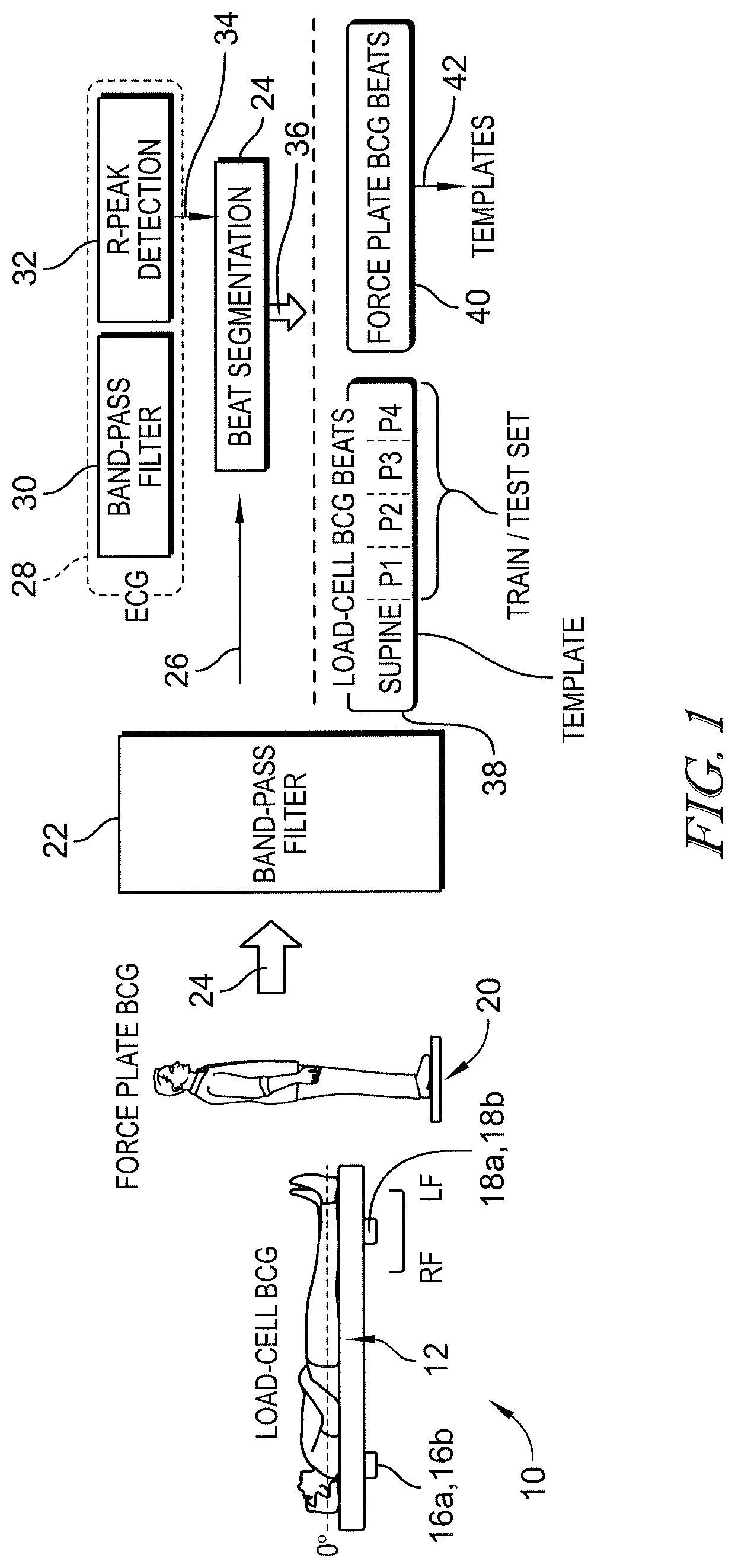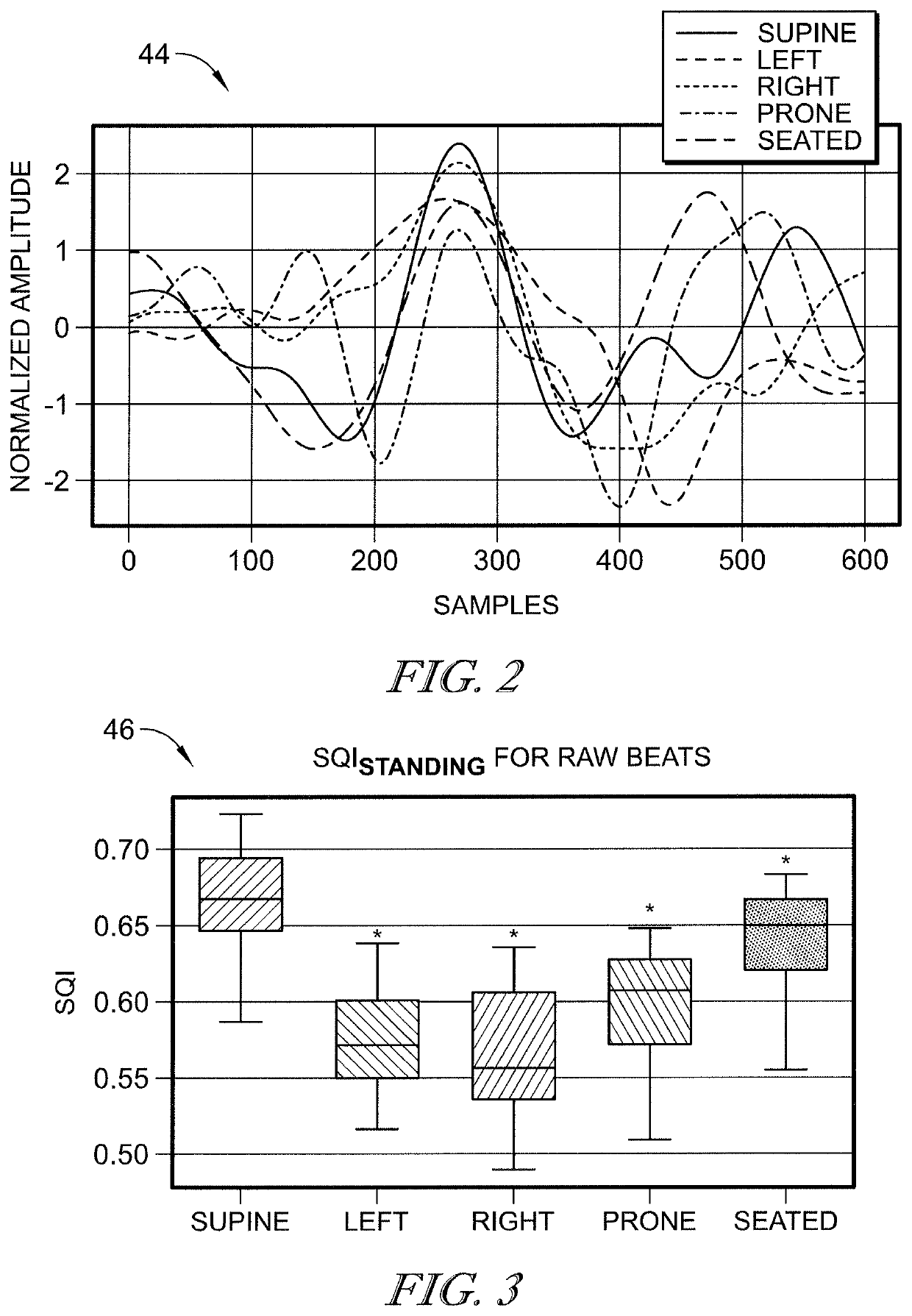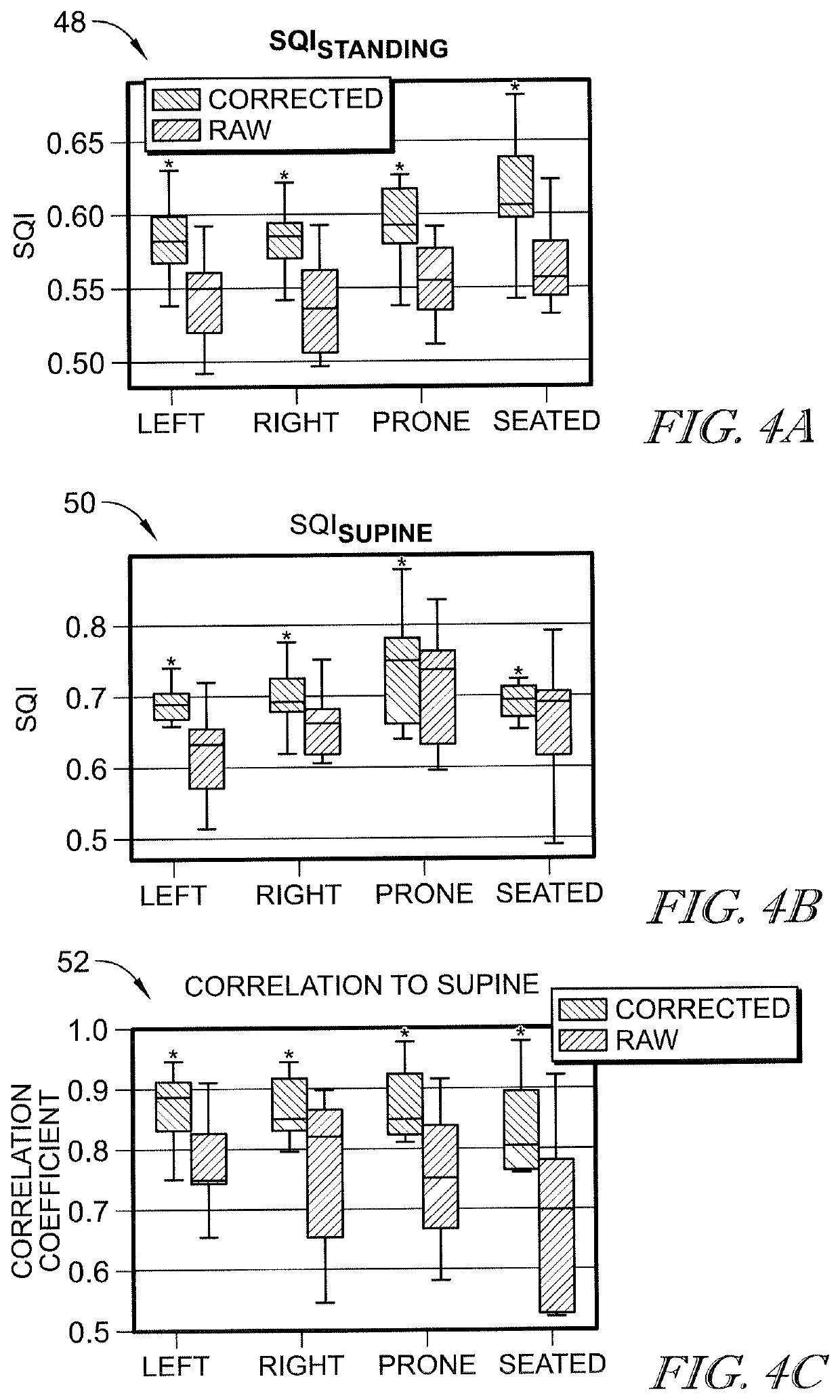Bed-based ballistocardiogram apparatus and method
a ballistocardiogram and apparatus technology, applied in the field of patient beds, can solve the problems of uncomfortable and impractical non-invasive solutions, common use in hospital settings, and limited accuracy
- Summary
- Abstract
- Description
- Claims
- Application Information
AI Technical Summary
Benefits of technology
Problems solved by technology
Method used
Image
Examples
Embodiment Construction
[0126]The ballistocardiogram (BCG), a measurement of cardiogenic whole body movements, is a technique that enables non-invasive cardiovascular monitoring. A main challenge of the BCG signal is that its morphology and amplitude are sensitive to the posture and / or position of the subject during the recording period. The effects of posture on the BCG measured from a subject standing on a weighing scale have been investigated in the literature, but the effects of body posture and / or position on BCG signals measured from a subject lying in bed have not been quantified. This work elucidates these effects in bed-based BCG recordings by (1) creating templates for standing BCG signals obtained from subjects in a prior study, and (2) quantifying the distance between these templates and BCG waveforms obtained in different body positions on the bed for a new set of subjects. The signal quality index (SQI), defined in previous work and corresponding to the inverse of the distance to the template...
PUM
 Login to View More
Login to View More Abstract
Description
Claims
Application Information
 Login to View More
Login to View More - R&D
- Intellectual Property
- Life Sciences
- Materials
- Tech Scout
- Unparalleled Data Quality
- Higher Quality Content
- 60% Fewer Hallucinations
Browse by: Latest US Patents, China's latest patents, Technical Efficacy Thesaurus, Application Domain, Technology Topic, Popular Technical Reports.
© 2025 PatSnap. All rights reserved.Legal|Privacy policy|Modern Slavery Act Transparency Statement|Sitemap|About US| Contact US: help@patsnap.com



